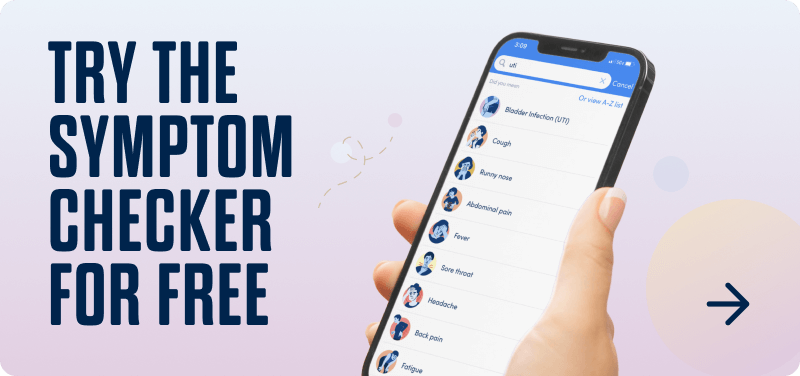Your child has a dry cough and overall feels icky. At first you thought it was just a cold, but since they developed a fever, now you wonder if it could be the coronavirus.
First off, take a deep breath. It’s normal to be worried anytime your child is ill, and especially these days.
The good news is, no matter what ails them, your kid will most likely be okay. Most children who get the coronavirus have much milder cases compared with adults who get COVID-19. In fact, many show no symptoms but carry the virus and can spread it to others.
By learning the symptoms of coronavirus in children, how the virus impacts kids, and what to do in order to diagnose and treat your sick child, you can help them get back to healthy.
What Is Coronavirus?
The new coronavirus is also called COVID-19. This name is a combination of the words “corona” (CO), “virus” (VI), “disease” (D), and “2019” (the year it the virus started).
When the coronavirus enters the body, it typically begins to affect the nose and lungs. This can lead to congestion or a runny nose and cough. If the virus continues to travel deeper into the lungs, it can make breathing difficult.
The good news when it comes to coronavirus in children is that if kids catch the virus, they typically fare better than adults. Why this happens is unclear.
Some doctors believe that, since children are frequently sick with all sorts of colds and illnesses, their immune systems may be more prepared to fight any infection that enters the body. Or it may be that kids’ and adults’ immune systems respond differently to the coronavirus.
Chat with a doctor and get COVID-19 treatment for adults for just $73
Get startedWhat Are the Symptoms of COVID-19 in Kids?
Coronavirus symptoms in children are not as common as they are in adults who get COVID-19.
Many kids have the virus but don’t have any symptoms. According to studies, anywhere from 16% to 36% or even as high as 45% of children who test positive for coronavirus have no symptoms.
However, coronavirus symptoms that do occur in kids are similar to the symptoms that adults experience. The main COVID-19 symptoms in children include:
- cough
- fever (temperature 100.4 °F or higher) or chills
- sore throat
- difficulty breathing or shortness of breath
- diarrhea, nausea, vomiting, or stomachache
- severe headache
- congestion or runny nose
- loss of smell or taste
- fatigue
- muscle aches
- poor appetite or, in babies, poor feeding
If you suspect your child may have coronavirus, get in touch with your doctor to coordinate next steps.
What Causes COVID-19 in Kids?
COVID-19 is caused by the severe acute respiratory syndrome coronavirus 2, which is also called SARS-CoV-2.
This coronavirus spreads through droplets. When someone infected with the virus coughs, sneezes, talks, or sings, they send these virus-containing droplets into the air.
If someone else inhales these droplets through their nose or mouth, they can catch the virus. Or if another person’s mouth happens to be open, the virus can land inside. Additionally, if someone touches a surface that has droplets on it and then touches their nose, mouth, or eyes, they can catch the virus.
COVID-19 may also be airborne. This is when the droplets stay in the air for at least several minutes, if not hours. Although this source of spread appears to be more rare, it’s believed to happen:
- In enclosed spaces
- In spaces with poor ventilation
- When an infected person is around others for at least 30 minutes.
Diagnosing COVID-19 in Kids
To determine if a child has the coronavirus, doctors use what’s called a polymerase chain reaction (PCR) test. This test can tell if the virus is present in the collected sample.
For this test, the health care provider can either use a nasal swab or saliva sample. These involve:
- Nasal Swab: Your doctor will insert a long, thin swab (similar to a Q-tip) into each nostril one at a time. Once the swab reaches far up the back of the child’s nose, they spin the swab for a few seconds to collect the sample. This test can be uncomfortable, however, it’s over quickly. Parents can help by holding and comforting their child so they feel safe and don’t move during this test.
- Saliva Sample: Your child will need to open their mouth so the person giving the test can use a long, thin swab to brush the back of their throat. Alternatively, your child can give a sample by spitting into a test tube a few times.
It takes about one to three days to receive the results of all of these tests. However, the exact timing of the results of your child’s test varies, so ask the health care provider who administered the test when and how you will receive the results.
If your child’s PCR test comes back positive, they have the coronavirus and need to stay home and isolate as much as possible so that they do not spread the virus to others. Typically a child needs to stay home for at least 10 days, but talk to your health care provider to determine the best course of action.
What about rapid testing?
So-called “rapid” tests for COVID-19 deliver results faster—in less than an hour and sometimes in as little as 15 minutes. Like a PCR test, these “rapid” or antigen tests use a nasal swab to collect a sample. However, instead of looking for the virus itself, this test looks for a certain protein that the immune system produces to fight the virus.
A positive result from an antigen test is considered to be highly accurate. Your child has COVID-19 and needs to take the appropriate actions to isolate as much as possible. On the other hand, negative antigen test results may not be accurate. If your child tests negative on a rapid test, very often, they should have a PCR test to confirm the results.
Treatment for COVID-19 in Kids
If your child tests positive for COVID-19 but shows no symptoms, keep them home for 10 days from the day they tested positive and monitor their condition.
Your kid may never develop any signs of the virus, however, they can still spread the virus. So as much as you can, keep them isolated.
When they are around the rest of the family, try to stay six feet apart and have everyone wear a mask. Also be sure to wipe down any surfaces that people touch frequently. Think: doorknobs and handles, kitchen counters, light switches, and remote controls.
If your child has coronavirus symptoms or develops COVID symptoms at any time, you can treat them at home—so long as the symptoms are mild. You can help them by:
- Encouraging rest. Let them sleep as much as they need to so their body has the energy to fight the virus.
- Providing fluids. Water is especially important if they have a fever. Soups are another source of liquid and can help ease a sore throat too. However, try to minimize juice and soft drinks, which are high in sugars.
- Using over-the-counter (OTC) medications. Acetaminophen can help relieve fever and pains; cough medicine can be used for cough; and lozenges can make a sore throat feel better (if they are appropriate for your child’s age). No matter what you use, always follow the dosing directions on the medication package unless a doctor tells you otherwise.
If you are ever concerned about your child’s symptoms, talk with a pediatrician.
Prevention
Preventing coronavirus in kids is no different than preventing the virus in adults. Work with your child to help them follow the recommended guidelines:
- Wear a mask. Anytime they are in a public space or around people you do not live with, they should wear a face mask that covers their mouth and nose. You can find kid masks online that best fit the size of your child’s face, thereby providing them the best protection. Note that children under the age of 2 should not wear a mask.
- Stay distanced. Help your child learn how far six feet is. That way, when they are outside of the home, they will know about how far to try to keep from others.
- Wash hands often. Most children know “Happy Birthday.” Suggest that your kid sing the song twice as they wash their hands. That’s about 20 seconds, which is the recommended length of time to cleanse our hands. Also be sure they always use soap and water. If your child can’t wash their hands, have them use hand sanitizer that contains at least 60% alcohol.
- Try not to touch your face. In particular, touching the eyes, nose, and mouth are no-nos.
- Avoid crowded spaces. If the museum has too many people to allow you to stay six feet apart, find another activity for the day. Or if kids are crowded on the playground, maybe the swings are more open.
- Cover up sneezes and coughs. Use a tissue when sneezing or coughing. If they cannot find a tissue, teach your child to sneeze or cough into their elbow and not in the direction of other people.
Risk Factors and Complications
Although children in general are less likely to become severely ill if they get the coronavirus, some kids are at greater risk of serious illness and complications. This includes children with:
Babies under the age of 1. This is believed to be due to their developing immune systems and smaller airways. If they develop breathing difficulties, these smaller airways make the problem even worse.
Some children who have coronavirus go on to develop multisystem inflammatory syndrome (MIS-C). Different parts of their body—such as the heart, lungs, brain, skin, or digestive system—become severely inflamed. This can lead to:
Chat with a doctor and get COVID-19 treatment for adults for just $73
Get startedWhen to See a Doctor
If your child shows any signs of multisystem inflammatory syndrome, call your doctor. If you notice any of the following symptoms, get your child to the emergency room or urgent care ASAP:
- Trouble breathing
- Persistent pain or discomfort in their chest
- Inability to stay awake
- New confusion
- Bluish lips
- Severe abdominal pain
If your child is hospitalized for COVID-19, the drug remdesivir is FDA-approved to use in those who are at least 12 years old and weigh at least 88 pounds.
FAQs
Yes. Since the beginning of the pandemic, at least 2.3 million American kids have tested positive for coronavirus. That’s about 11% of the total number of cases.
Less than half a percent of COVID deaths occur in children. 1-7% of children who get COVID-19 end up in the hospital, and 188 have died as of January 7.
Yes. Kids of all ages appear to have the same viral load, or amount of virus in a person’s body. Because of this, doctors believe children can, indeed, spread the virus. Plus, the latest data suggest that children can spread coronavirus, particularly to other kids living with them. While there’s some evidence that those ages 10 and younger may be less likely to spread the virus compared to older people, this is still being studied.
Yes. Even when there are no COVID symptoms in children, if those kids have the virus, they can spread it. According to one study, asymptomatic children can spread the virus for up to two weeks and possibly longer.

 Medically reviewed
Medically reviewed
